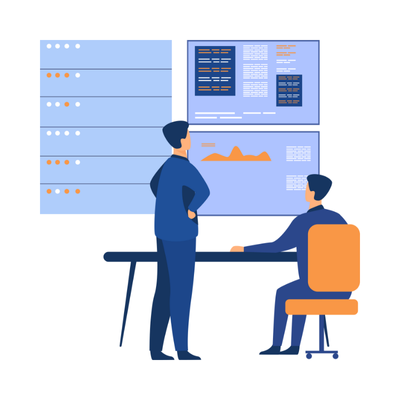Business today is not just about selling products. It is about knowing the market, reading trends, and planning moves at the right time. One of the most powerful tools for this is the GST data of competitor. It gives you valuable insights into sales, purchases, and growth patterns of companies in your industry.
When used wisely, this data can help you design better strategies and make stronger decisions. Let’s explore how it works, why it matters, and how businesses use it to grow.
Why Competitor Insights Matter
Every business wants to know what others in the market are doing. Competitor analysis is not new. But with GST data, the process becomes faster and more accurate.
Instead of guessing about sales or struggling with limited information, you can look at structured tax-based records. This data highlights real sales and purchase activity. It shows what kind of demand exists, how much turnover is happening, and even which industries are rising.
By tracking this flow, businesses can compare their performance with rivals. This is the first step toward building stronger strategies.
GST Data of Competitor and Market Understanding
When companies study the GST data of competitors, they discover patterns. For example, you might notice that a rival is importing more raw materials. This can mean they are preparing for expansion. Or, you may find that a competitor is selling more in certain regions, which signals untapped opportunities for you.
These details offer a clear picture of the market. They also help businesses decide whether to expand, adjust pricing, or even enter new territories.
Looking Beyond Numbers
It is easy to think GST data is just about figures. But the real value lies in the story behind the numbers. When you connect the dots, you understand why sales are increasing, what customers prefer, and which products are leading.
For example, if competitor data shows consistent growth in eco-friendly products, it signals a shift in customer demand. By acting on this insight early, your brand can create products that match future trends.
Strategic Benefits of Using Competitor Data
Studying competitor GST data comes with several advantages.
Better planning – Businesses can plan their inventory, marketing, and investment with confidence.
Benchmarking – You can compare your performance against others in the same field.
Identifying gaps – If a competitor is missing out on a region, you can step in.
Spotting risks – Sudden drops in rival sales may warn you about market slowdowns.
With these benefits, competitor insights turn into a strategic weapon.
How Businesses Use GST Competitor Data
Different industries use the GST data of competitors in different ways.
Manufacturers track raw material purchases of others to forecast future supply needs.
Retailers observe sales trends to decide which products to stock.
Distributors use regional sales insights to expand in high-demand areas.
Startups study market leaders to shape their entry strategies.
No matter the industry, the principle remains the same. When you understand your competition, you make smarter moves.
The Role of Data in Business Growth
In today’s market, data is the new fuel. Without it, decisions are blind guesses. But with GST records, companies gain visibility. They know where they stand and where the market is going.
For small businesses, this insight is especially useful. It allows them to compete with bigger players on equal footing. Data removes the advantage of size and replaces it with the advantage of knowledge.
Challenges in Using Competitor GST Data
While the benefits are clear, businesses also face challenges.
Data overload – Sometimes, there is too much information, making it hard to focus.
Accuracy – Data must be verified before using it for decisions.
Interpretation – Not all teams have the skills to turn raw numbers into useful insights.
Overcoming these challenges requires clear goals and a smart approach to data use.
Ethical Use of Competitor Insights
It is important to remember that GST records are for compliance and transparency. Businesses should use competitor insights responsibly. The goal is not to copy others but to learn and improve.
Ethical use ensures fair competition. It also helps in building trust in the market.
Future of Competitor Analysis with GST Data
The future looks exciting. As technology improves, analyzing competitor GST data will become faster and more accurate. Artificial intelligence and automation will play a big role. Businesses will get real-time updates on market shifts and competitor moves.
This means decisions will not only be smarter but also quicker. Companies that adapt to this trend will stay ahead of those who ignore it.
Final Thoughts
The GST data of competitor is more than just numbers. It is a window into market behavior, customer demand, and industry growth. By using this information wisely, businesses can strengthen their strategies, reduce risks, and find new opportunities.
Competition will always exist. But with the right insights, you can turn it into a source of growth instead of fear.
Our Other Related Articles

